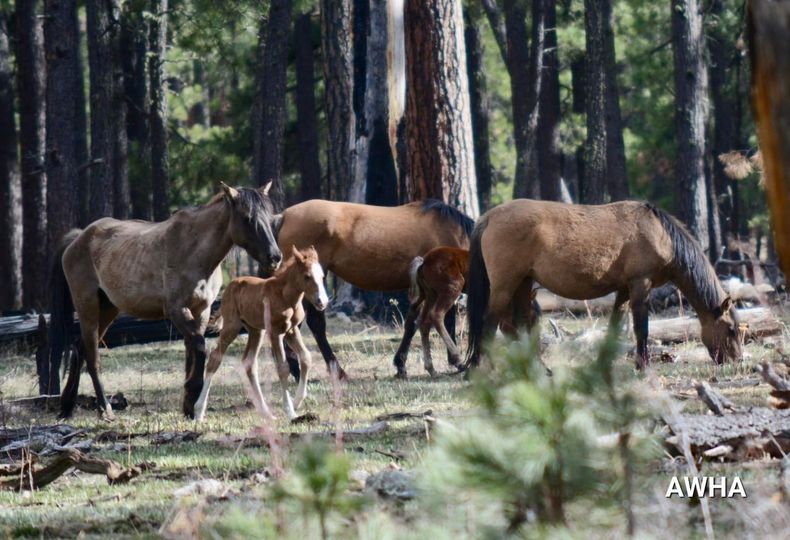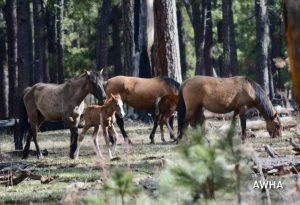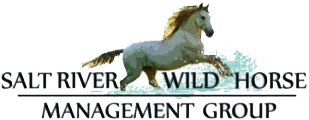
Humane wild horse management
April 30th
Humane wild horse management, what does it mean?
So many cute foals are being born right now in herds not managed through birth control. This photo is of the Alpine wild horses in Arizona. They are simply adorable. We fondly remember 2019 when, our Salt River herd had 16 foals before the end of march, 28 foals in April, 19 in May, 18 in June, 11 in July, 9 in August, and 8 in sept/oct/nov/dec. A total of 109. We had lots of adorable foal pictures to post, which were very popular.
However as nature prescribes, not all of them survived, 86 of those foals are still with us today. Out of those 86, 42 are fillies and they all would have had their own foals by now. Of course the older mares would have too, so we would have had very large foal crops these last few years.
That year of 2019, we responded to 43 foal related emergencies. We reunited 3 lost foals with their mothers of which 2 survived, we found 2 mares who died in childbirth with their foals, we rescued 4 lost foals of which 3 survived, we monitored numerous foal injuries and also several foals just disappeared. These are statistics that are completely natural and normal deathrates in every wild horse herd everywhere.
We had done our certification and designed our birth control program in 2014. We had been advocating for it for many years before we were authorized to start in October of 2018. At that time of course all of the mares were already pregnant with their 2019 foals. So in 2020, is when the first results started to show and fewer foals were being born. We had 17 foals in 2020 of which 15 are still surviving. Then in 2021 we only had 3 foals of which 2 are still surviving.
This means that 220 breeding age mares did not become pregnant as a result of PZP darted in the field by certified volunteers.
3 mares out of 220 is a 1% failure rate, or 99% success rate.
So far this year, we had 1 foal out of a mother under 2 years old, and the foal unfortunately did not survive for lack of colostrum. The mother is fine, and we calculated that she became pregnant one week before she received her pzp booster. That was an exception and very unfortunate.
So while we had 44 by this time in 2019, we have no foals on the Salt River right now. We may have 1 or 2 foals coming out of mares we could not find in time to dart. Time will tell. Next year we will begin to select some mares who can take a break from pzp so that we can continue to have a few foals every year for continued viability.
While we miss the cuteness overload of foals we are not sad not to see them. We are preventing a lot of suffering. We are preventing roundups and removals.
We are compassionate people and we deeply care about every Salt River wild horse. We want every horse born on the river to be able to live out their lives peacefully on the Salt River without fear of helicopters. We want people to be able to enjoy wild horses and we want them to be around for our grandchildren to enjoy also.
We were so close to losing all of that. Many herds across the country including one in Arizona (the Alpine herd) have an unknown fate right now. Roundups and removals seem inevitable.
But they are evitable. We work very hard every single day to prove that it can be done differently. Our numbers are verified. We have prevented the birth of over 300 wild horses in 3 years. We have saved the government a lot of money and we have saved the horses a lot of suffering.
Managing wild horses can be done more cost effectively, more agreeably and more humanely.
We are not the crazy horse people anymore.
Arguably, the ones who aren’t listening are now the crazy ones.
Proudly managing them humanely as part of our national heritage, SRWHMG.

